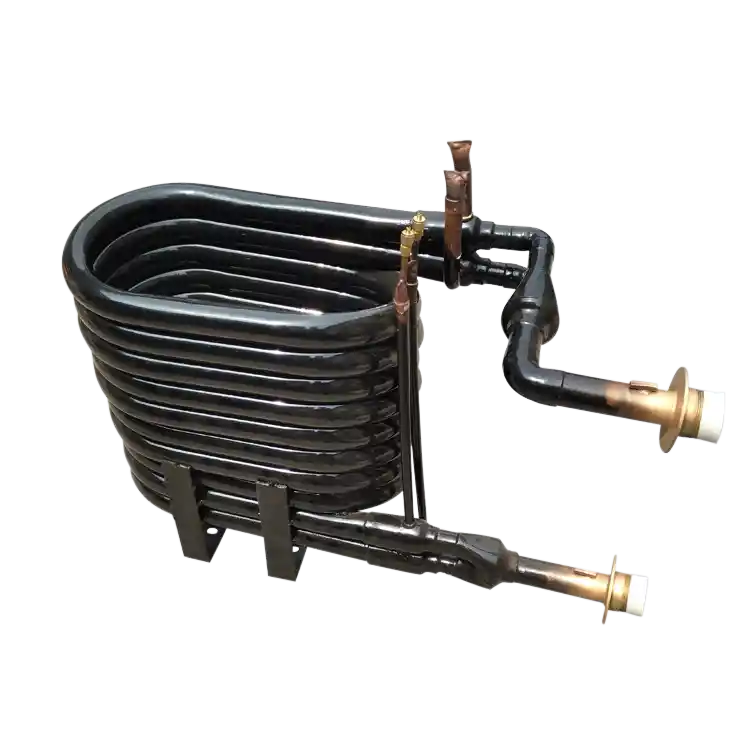Introduction
The assembly and connection of the inner and outer tubes are crucial steps in the production process of coaxial heat exchangers. This article focuses on the significance of aligning and inserting the inner tube into the outer tube and its impact on the overall performance and efficiency of coaxial heat exchangers. We will delve into the key processes involved in aligning and inserting the inner tube, emphasizing the importance of precision, proper techniques, and considerations to achieve seamless integration and optimal functionality of coaxial heat exchangers.
1. Importance of Aligning and Inserting the Inner Tube
The alignment and insertion of the inner tube into the outer tube are critical for ensuring the proper functioning and performance of coaxial heat exchangers. This section explains the significance of precise alignment and insertion techniques.
1.1 Optimal Heat Transfer
Accurate alignment and insertion of the inner tube into the outer tube facilitate maximum contact between the two tubes, resulting in efficient heat transfer. Proper alignment reduces thermal resistance and ensures optimal heat exchange between the fluid streams, enhancing the overall heat transfer efficiency of the heat exchanger.
1.2 Reduction of Thermal Stress
Precise alignment and insertion techniques help minimize thermal stress in the coaxial heat exchanger. When the inner tube is correctly aligned and inserted into the outer tube, it allows for uniform heat distribution and expansion, reducing the risk of thermal stress-related issues such as deformation, leakage, or mechanical failure.
1.3 Prevention of Fluid Leakage
Proper alignment and insertion techniques also contribute to the prevention of fluid leakage within the heat exchanger system. A securely aligned and inserted inner tube ensures a tight seal, preventing the unwanted mixing or leakage of fluid streams and maintaining the efficiency and integrity of the heat exchanger.
2. Alignment and Insertion Process
The alignment and insertion process of the inner tube into the outer tube involve several crucial steps, including preparation, alignment verification, and insertion techniques. This section provides a detailed overview of the alignment and insertion process for coaxial heat exchangers.
2.1 Tube Preparation
Before aligning and inserting the inner tube, it is essential to ensure proper tube preparation. This may involve cleaning, deburring, and verifying dimensional accuracy and surface quality. The inner and outer tubes should be free from any contaminants or irregularities that could hinder alignment or insertion.
2.2 Alignment Verification
Accurate alignment verification is a vital step to ensure the concentricity and compatibility of the inner and outer tubes. Specialized alignment tools, such as laser alignment systems or precision measurement devices, can be used to verify alignment and ensure the optimal positioning of the inner tube within the outer tube.
2.3 Insertion Techniques
Various techniques can be employed for the insertion of the inner tube into the outer tube. These techniques include manual insertion, hydraulic or pneumatic methods, or the use of specialized insertion tools. The selection of the insertion technique depends on factors such as tube dimensions, manufacturing requirements, and the desired level of precision.
3. Considerations for Alignment and Insertion
Several considerations should be taken into account during the alignment and insertion process to ensure optimal performance and reliability. This section highlights key factors that manufacturers should consider.
3.1 Dimensional Compatibility
The dimensional compatibility of the inner and outer tubes is crucial for seamless alignment and insertion. Proper measurement and verification of tube dimensions, including inner and outer diameters, wall thickness, and length, are essential to ensure a precise fit and avoid misalignment or difficulties during insertion.
3.2 Lubrication and Surface Treatment
Appropriate lubrication and surface treatment can aid in the smooth alignment and insertion of the inner tube into the outer tube. Lubricants, such as specialized greases or coatings, reduce friction and facilitate the insertion process while maintaining the integrity of the tubes. Surface treatment techniques, such as polishing or coating application, can enhance compatibility and reduce the risk of surface damage or corrosion.
3.3 Safety Precautions
Safety precautions must be followed during the alignment and insertion process to prevent accidents or damage to the tubes. Operators should wear appropriate personal protective equipment (PPE) and adhere to established safety protocols. Additionally, proper training and supervision should be provided to ensure the correct handling and positioning of the tubes.
Conclusion
The precise alignment and insertion of the inner tube into the outer tube play a critical role in the performance and efficiency of coaxial heat exchangers. By following proper techniques, considering dimensional compatibility, and incorporating lubrication and surface treatment measures, manufacturers can achieve seamless integration, optimal heat transfer, and reliable operation of coaxial heat exchangers. Attention to detail, adherence to safety precautions, and continuous quality control are essential for the successful alignment and insertion process. The careful execution of these steps ensures the seamless integration and long-term functionality of coaxial heat exchangers across various applications.


